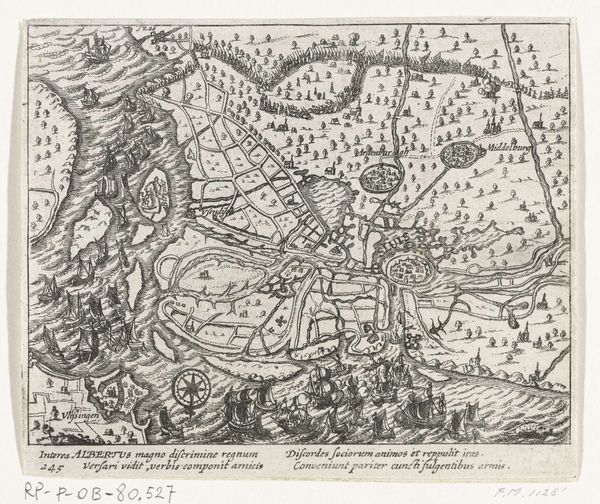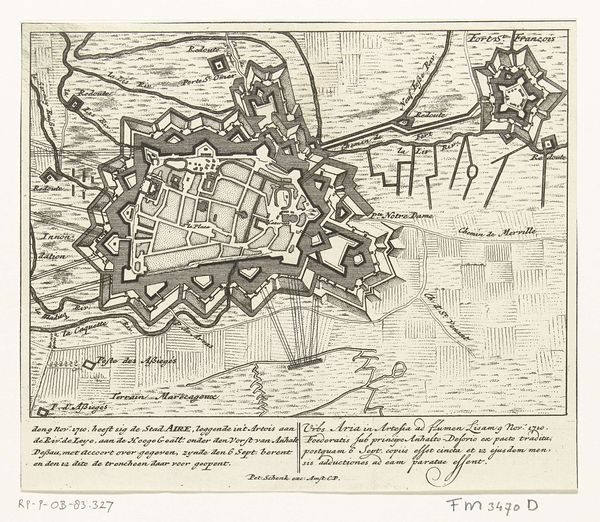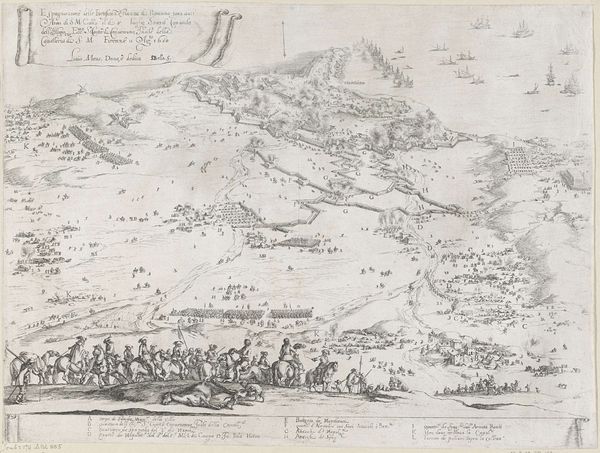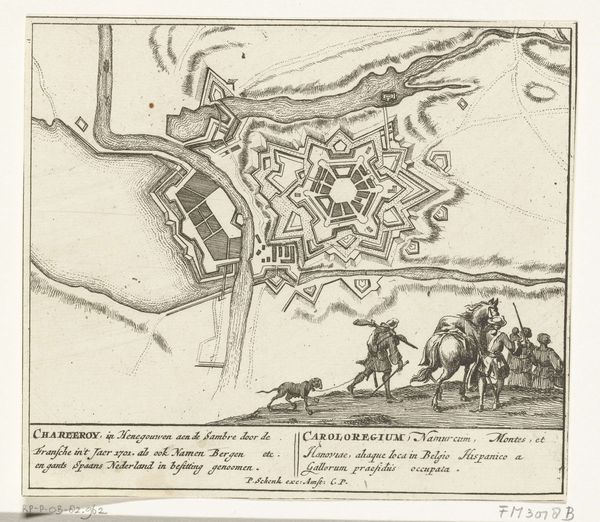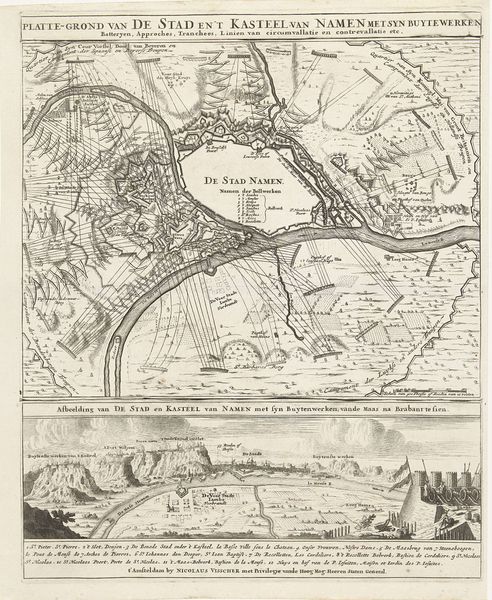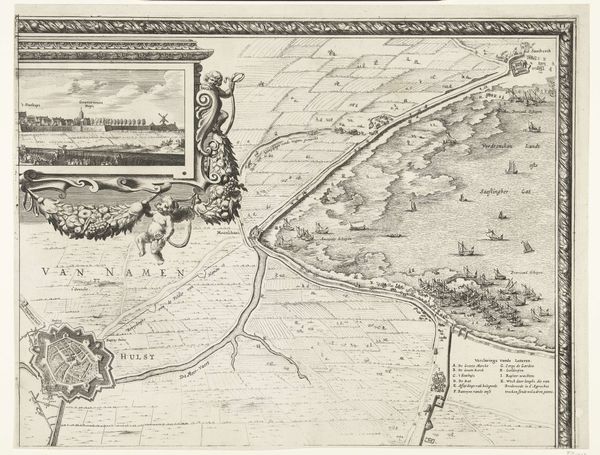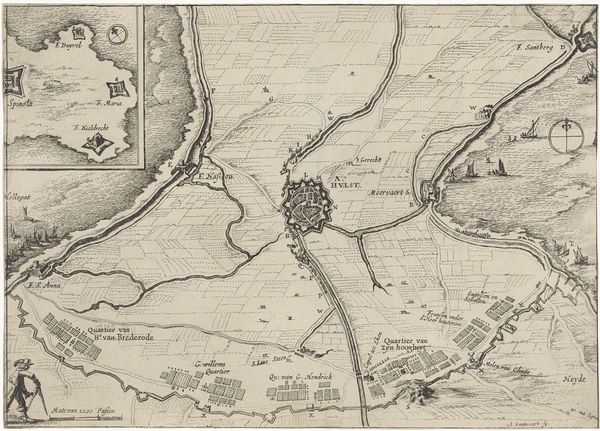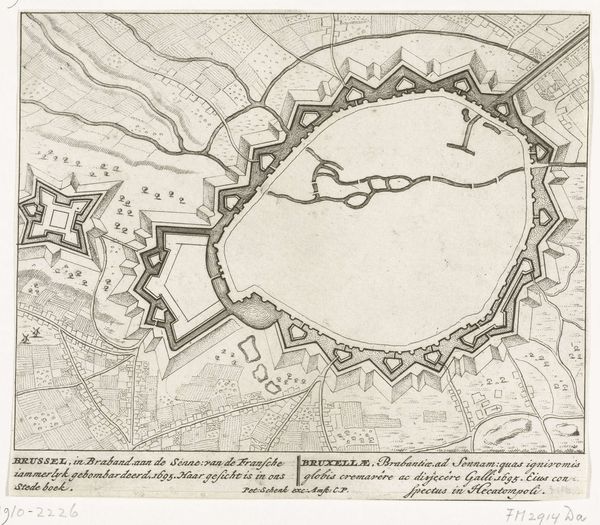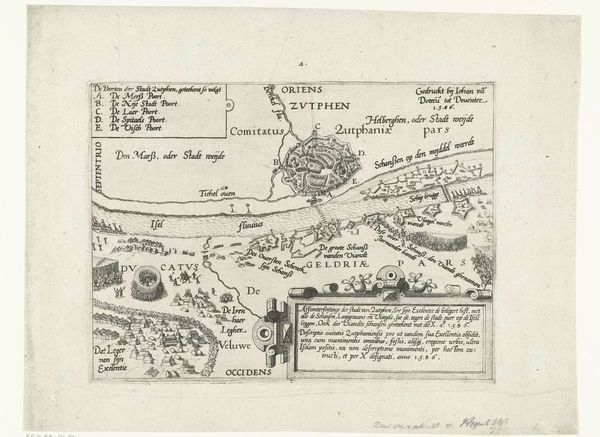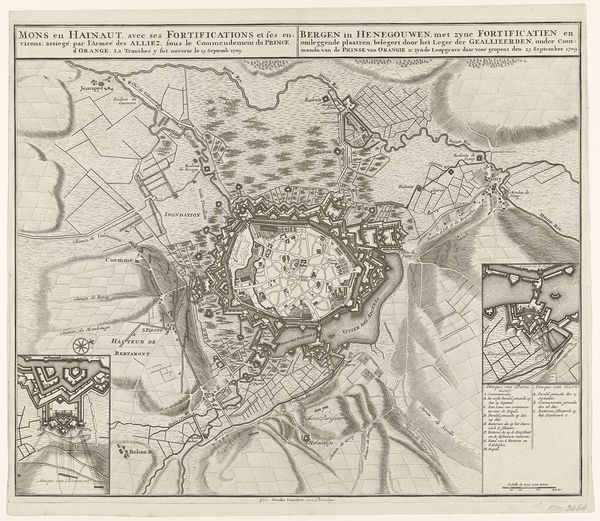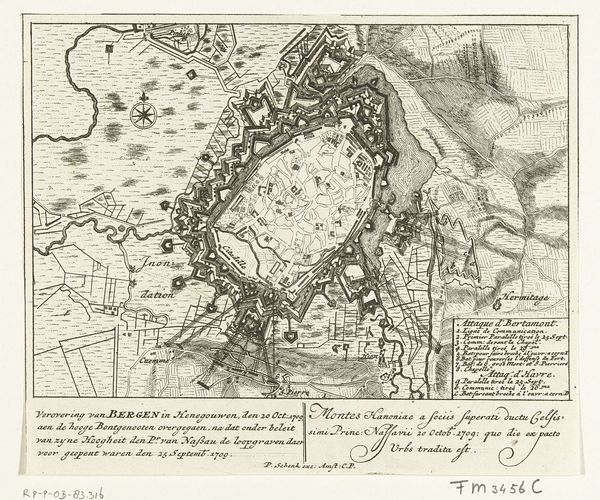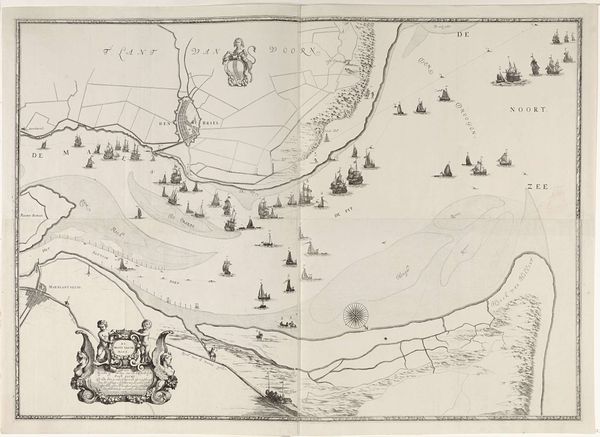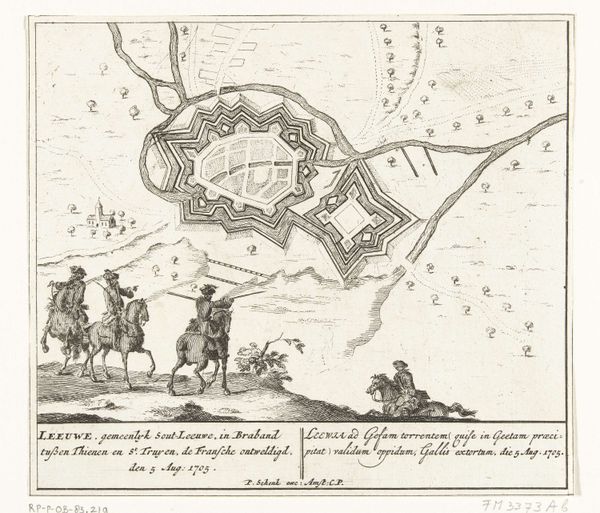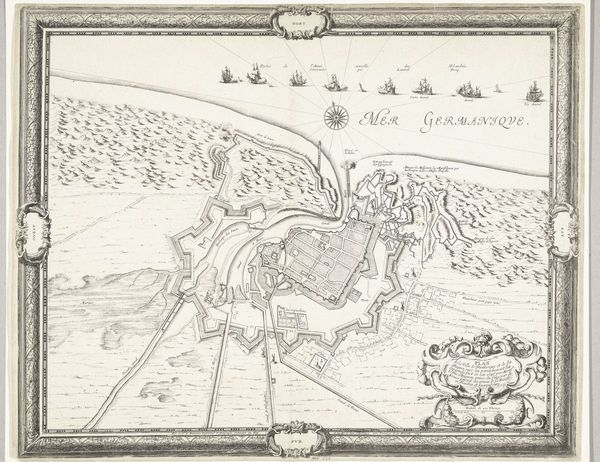
print, etching, engraving
#
baroque
# print
#
pen illustration
#
etching
#
cityscape
#
history-painting
#
engraving
Dimensions: height 162 mm, width 192 mm
Copyright: Rijks Museum: Open Domain
Curator: This engraving by Pieter Schenk, created in 1712, depicts a bird's-eye view of the fortified city of le Quesnoy. I'm particularly drawn to how it illustrates the meticulous processes of 18th-century siege warfare. Editor: It feels like looking at an intricate, hand-drawn video game strategy map! I love how the detailed fortifications contrast with the swirling, almost abstract rendering of the surrounding landscape. There's a sense of looming conflict, but also a strange elegance in the lines. Curator: Absolutely. What we're seeing is more than just cartography; it's propaganda. Engravings like these served to inform and impress. Consider the use of etching and engraving techniques to convey textures – the meticulously rendered stone walls, for instance. The intention here is clearly to showcase engineering prowess and the resources required for such a military operation. Editor: You're right; it's so purposeful. Look at the tiny figures in the lower right corner—strategizing perhaps? They feel staged, like actors on a grand set. It makes you wonder about the actual human cost represented by this clean, ordered depiction of war. Curator: The text below in Dutch and Latin celebrates the Allied capture of the city, highlighting the strategic value. It details how under the command of General Fagel they forced the surrender of the stronghold in July. We must also think of its mass reproducibility. Prints allowed these images, these narratives, to be widely disseminated, shaping public perception of military campaigns. Editor: So true. You start seeing the almost sinister side of this aesthetic precision. But regardless of the context, I'm just impressed by how the city rises organically like some natural geomorphic fractal amidst those carefully cultivated battlegrounds. Curator: And to think of the engraver laboriously incising each line. The materiality is so crucial in the way the victory is portrayed, connecting labour and geopolitical narratives. Editor: Examining it, now, after discussing production details and intention, transforms the drawing into less an artifact, more an urgent relic about ambition and fragility. Curator: Precisely. Looking at it in those terms allows us to understand this piece beyond the immediacy of a simple city plan.
Comments
No comments
Be the first to comment and join the conversation on the ultimate creative platform.
